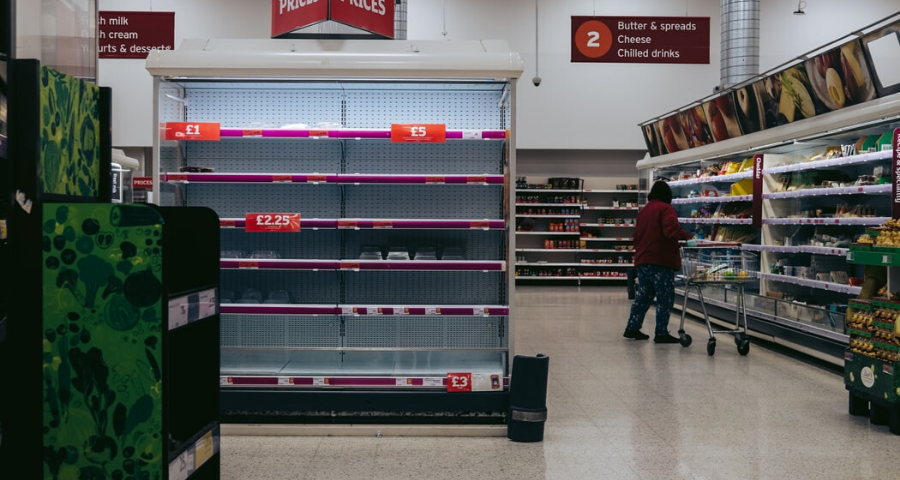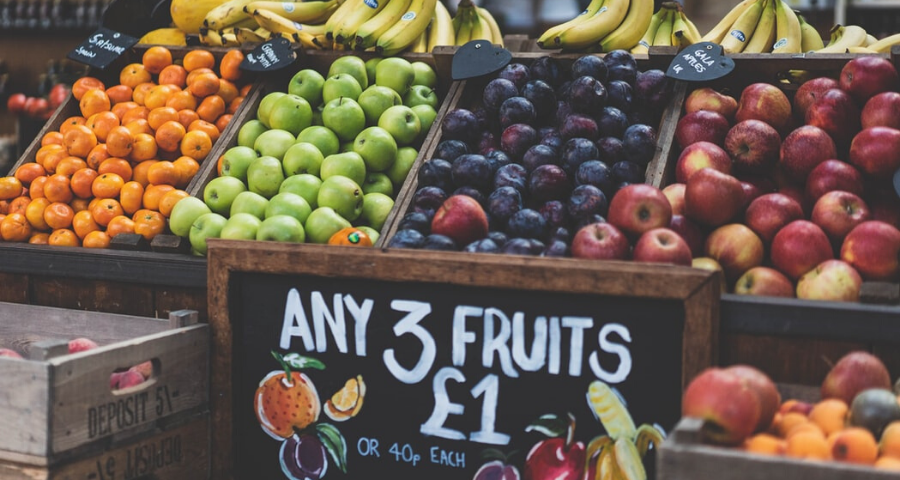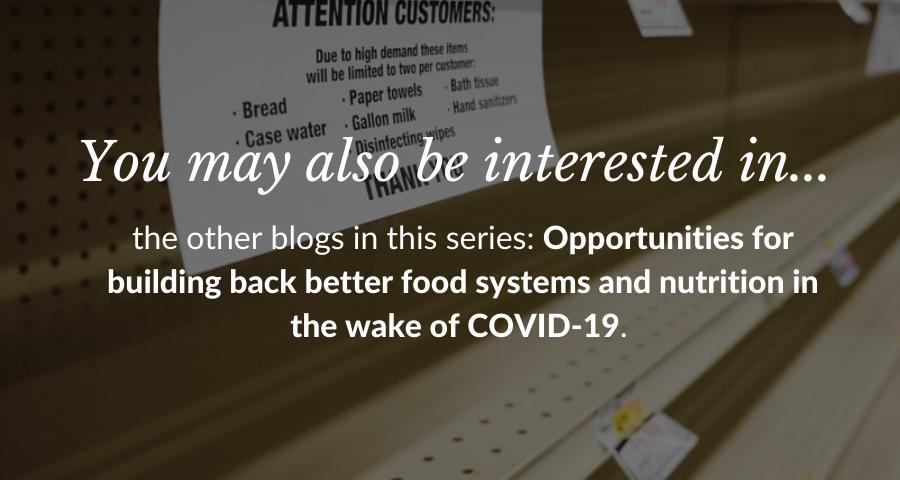Life in lockdown
Food is a major part of lockdown for me, and a lot has changed in how I plan meals and shop for food. I know I’m not the only one. How we buy, prepare, store, eat and value food has changed for everyone during lockdown.
This has implications for future policy-making; in particular, policies that aim to help people maintain a healthy diet and reduce obesity. If healthy eating initiatives are to be effective, they need to take into account how people’s relationships with food and shopping are changing.
The current picture
It’s still early days – too early to say exactly what has changed with certainty – but there have been various surveys across the UK that give a flavour of what’s going on with people and food as a result of COVID-19 and lockdown. Table 1 provides for an overview of the surveys I’ve drawn on here. You can see they have been conducted by a range of advocacy groups, academic institutions and charities.
The results differed slightly, but there are some clear changes people are making that are summarised below.
Alone, surveys from March to May are not enough to determine concrete, long-term shifts in what people are doing. But we can at least start to develop hypotheses to answer the following questions:
- What changes are taking place during lockdown?
- Which changes are positive that people will want to maintain post-lockdown?
- How can policies support and encourage this?
- What are the challenges for healthy eating that arise from the current situation?
- How can policies mitigate the effect of these challenges?

10 ways people are changing in relation to food
Key changes that stand out from the surveys (see Table 1 for references 1-8) are:
1. People are reportedly spending more time eating as a family and preparing food from scratch together at home (2,3,4,5,6). There has been an apparent increased interest in developing cooking skills and experimenting with new foods, brands and recipes found online (2,3,8). Not surprising, really, when we can’t go anywhere else. However, this doesn’t tend to apply to key worker groups, where working from home is often not an option.
2. More people appear to be interested and engaged in growing food at home, but this seems to be more among people with a higher income (and presumably a garden, balcony or ample windowsills) (2).
3. People say they are buying more fruit and vegetables, although this also appears to be more in the medium to high-income groups (5,6).
4. Surveys indicate people are more aware of how much food they’re wasting and are making more of an effort to plan their shop and freeze or use up food as much as possible (2,3,8).
5. People seem to be shopping in different places and supporting local businesses more (3). For example, online veg box schemes have become extremely popular – both because of the delivery option and the appeal of the food being sourced locally (1,2,4). Buying locally from farmers, butchers, and other food suppliers appears to have increased among those on a medium to high income (2,3).
6. People say they are now more aware of where their food is coming from and how it gets to the shops – most likely because it’s the first time for a lot of us that shops don’t have everything we need (or want) (8).
7. Fast food consumption may have decreased during lockdown due to the closing of many outlets, and the majority of people seemed to be buying fewer takeaways due to fears of contamination and tighter budgets (5,6,8).
8. An important change noted in most surveys (and everywhere on social media) is an increase in snacking on biscuits, cakes, crisps and confectionary as a treat or comfort food (5,6). This appears particularly true for teenagers lacking the structure of school and activities to keep them busy.
9. One survey (7) showed that people were noticing fewer multibuy promotions in supermarkets, but that people say the amount of food advertising on TV and online appears to have stayed the same.
10. There appears to be an increased concern about body weight and eating more unhealthily overall, indicating that some weight gain across the population may be expected (5).

Opportunities and challenges for policies aimed at healthy eating
These surveys are of course limited, as they took place at different snapshots in time during lockdown, where things were changing rapidly week on week. Although all the surveys aimed to be nationally representative, the online method would mean that the most vulnerable in society are likely to have been excluded from the findings. Further research is needed to see how COVID-19 has impacted people both during and after lockdown, now and in the long-term.
For now, these survey findings highlight five policy opportunities to help support and encourage healthy eating in the UK.
Flexible working hours, financial security and childcare support
More people are enjoying cooking from scratch and eating as a household, experimenting with recipes and using the mealtime to come together. Survey results show that people are positive about these new practices and would like to maintain them post-lockdown.
However, it is important to consider that those on a low income – often key workers – have not had the opportunity to spend more time cooking and eating with their family. This is a group already at higher risk of overweight and obesity, as rates are consistently higher for those on a lower income.
With certain positive changes seeming to occur more in those of a medium to high income (increased fruit and vegetable consumption, cooking at home, growing own food), it is vital to ensure that the social gradient of obesity is not further widened as a result of new policy.
Future policy must consider the financial (in)security, working hours and childcare options available to those on a low income.
POLICY OPPORTUNITY 1: Can workplaces and hours be more flexible in future to allow people to spend more time with family? Policies to help people eat more healthily does not just have to come from the health-related government agencies – support with working hours and childcare could have the knock-on effect of maintaining family mealtimes.
Incentives and promotions on healthy foods
An overall increase in fruit and vegetable consumption would also be positive and important to encourage with incentives and promotions when people may have less time to shop and cook from scratch. Prices are important – money is tight for a lot of people at the moment and affordability will trump other concerns when buying food on a restricted budget.
POLICY OPPORTUNITY 2: Can the price of healthy options be kept as low as possible, and people made more aware that they are good value? Healthy food is often seen to be the more expensive option and promotions rarely focus on these foods.
POLICY OPPORTUNITY 3: Could an increased interest in people growing their own food be supported by providing more spaces in cities for this to be possible? Vouchers and subsidies for soil and seeds are a simple way to do this.
Restrictions on marketing and promotions
Marketing and promotions are designed to encourage people to consume foods that are high in fat, salt and/or sugar- in other words, unhealthy snacks and takeaways.
Whilst the increase in unhealthy snacking is likely due to boredom, anxiety and lack of structure in many people’s daily lives during lockdown, snacking habits are often difficult to change.
Similarly, as cafes and restaurants open again, unhealthy options will assume a new appeal. For example, there was hysteria in the UK surrounding the re-opening of McDonald’s outlets – high demand for their products has not gone away. Emotive and engaging marketing campaigns throughout lockdown have helped to sustain consumer loyalty, and increase the appeal of these foods now that they are available again.
We need marketing and promotions to increase people’s preference for healthy options and sensible portion sizes, and not push the biscuits, cakes, crisps and sweets that many people may now be consuming as snacks in larger quantities than before.
If people have gotten used to not having as many takeaways, restrictions can help make sure that people want them less often in future as well.
POLICY OPPORTUNITY 4: Would tighter restrictions on marketing and promotions of unhealthy food now be more acceptable? The most recent survey from the Obesity Health Alliance (May 2020) shows considerable public support for a range of policies to restrict ‘junk’ food adverts and unhealthy food promotions.
Healthy and appealing local food
It is also important to create more social spaces with healthy and appealing food options (that do not cost more than the unhealthy ones). They should appeal to adults and young people alike - teenagers need somewhere to meet friends where unhealthy food isn’t the only option. Developing local food options that are sustainable and healthy and satisfy what appears to be an increasing desire to understand where food comes from would mean we do not rely so heavily on the big supermarkets and can continue to support local businesses more.
As with snacks and food products consumed within the home, stricter marketing regulations for fast food outlets is also needed.
POLICY OPPORTUNITY 5: Can financial incentives be used to encourage local food markets and retail diversity, whilst restricting the overall number of unhealthy takeaway outlets in an area? This can help to create attractive places to go with friends and family that offer healthy, tasty food.
Summary
The upheaval caused by COVID-19 has changed how people buy, prepare, store, eat and value food. More research is needed to fully understand long-term changes; however, the available surveys indicate there are obvious policy options that can help to support and encourage healthy eating now and in the future. COVID-19 has created a space in which innovative and ambitious measures to help people maintain a healthy diet are both more feasible and necessary than ever before.

Kimberley Neve is a Research Assistant at the Centre for Food Policy and a Registered Associate Nutritionist with the Association for Nutrition. She is currently working on a series of projects for the NIHR-funded Obesity Policy Research Unit, exploring how food policies can better support positive nutritional outcomes, particularly in low-income areas. Learn more or follow her @KLNeve.

